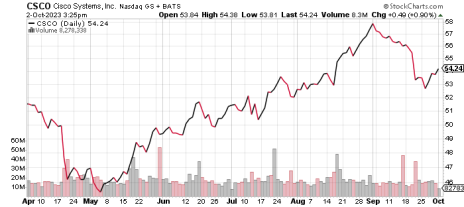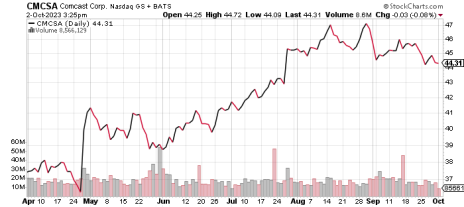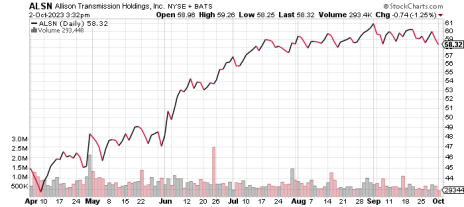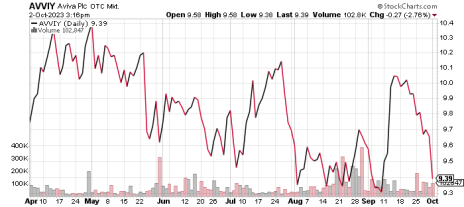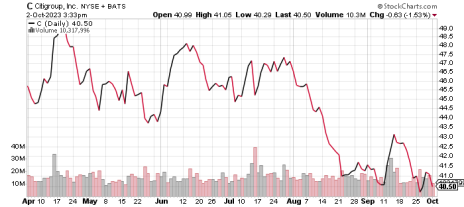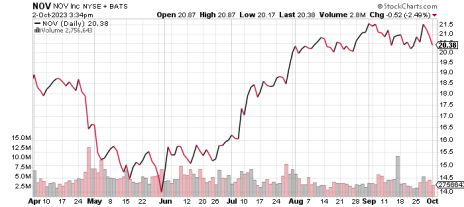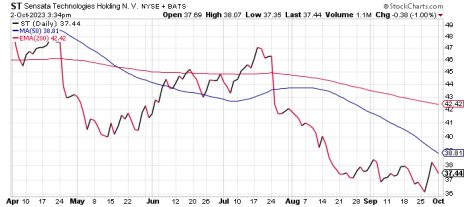Live Sports, Cable TV and Streaming
Analysts, pundits and regulators regularly provide expert opinions and analysis on the future of cable TV. Members of the normal population see cable as an over-priced product with lousy customer service, but tens of millions of households still pay over $100/month to have it because of the immense convenience of turning on the gear and finding every major sporting event, viewable on a big screen.
With the advent of streaming, every content provider is shifting to a streaming-first format. Most people are fine with having a few streaming services for movies, drama series and other pre-recorded shows. Many will put up with the inconvenience of rotating through the various services to get their content while keeping their monthly bills under control. Critically, shows can be stockpiled and watched at any time, so their value is relatively stable.
But, when it comes to sports events, the situation is different. Fans want to watch their game live, as it happens. This creates immense value for the streaming services as viewers will also watch the advertisements. But, while a live game has immense value, it is a wasting asset. Once the event is over, the content has near-zero value. Only classic games, like the recent win by Ohio State over Notre Dame at the last second, for example, are worthy of repeat viewing.
Sports fans have a few key “asks.” They want to be able to quickly find their game (how many people actually pre-find their game earlier than 2 minutes before it starts?), they want to be able to watch it on the big TV screen and they want to be able to quickly switch from one game to another.
None of these are now doable in a world where too many games are shown on streaming-only services.
I’ll speak from direct experience here. On Thursday evening, rather than watching the NFL Thursday Night Football game on the big screen, I was relegated to watching it on my iPhone because my cable TV provider didn’t accept my fully paid-up Amazon Prime subscription log-in. On Saturday evening, the must-watch (at least for Cubs fans hoping in vain for a wildcard-enabling win) Cubs-Brewers game was available only on “some other service” which I was not able to get through any paid-up cable TV service, so I was relegated to the audio-only webcast on mlb.com on my iPhone, through a separately paid mlb.com subscription. On Sunday morning, I wanted to watch the Falcons-Jaguars game in London (the “Toy Story” game), but I needed to subscribe to the ESPN+ streaming service. Not a subscriber. So, the value of this game was a total loss to me and to networks like ESPN (owned by Disney) and the NFL.
Full-on NFL addicts will pay up for the NFL Sunday Ticket (now run by YouTube and which used to deliver EVERY game but now only promises to deliver every game but actually does not). Casual NFL fans like myself and my kids are the incremental customers that are the future growth of viewership. If we can’t readily find a game, we won’t watch it.
As the previously simple task of watching a game has become a complex juggling act of multiple paid streaming services, cable TV, rabbit ear TV, big screen and iPhone viewing, sports fans will eventually rebel. Maybe college-aged students, unfamiliar with the former ease of the cable TV football experience, don’t mind, but everyone else will wonder just why, exactly, they pay $100+/month for cable, then $37.42/month for YouTube’s NFL Sunday Ticket, plus $9.99/month for ESPN+ and maybe more for another service like Amazon Prime.
All the analysis and punditry in the world does little when everyday sports fans are shut out of their games. This is the problem that streaming services need to resolve. It will get worse before it gets better.
Fortunately, as an investor, I find that Comcast should do well in the streaming world because of their powerful position in selling high-speed internet service. This service is considerably more profitable than selling cable TV content. However, I won’t mention my direct experience with their customer help desk.
Share prices in the table reflect Monday, October 2 closing prices. Please note that prices in the discussion below are based on mid-day October 2 prices.
Note to new subscribers: You can find additional color on past earnings reports and other news on recommended companies in prior editions and weekly updates of the Cabot Value Investor on the Cabot website.
Send questions and comments to Bruce@CabotWealth.com.
Today’s Portfolio Changes
None.
Portfolio Changes Since Last Month
New Buy: Philip Morris International (PM)
Sensata Technologies (ST) – Reducing price target from $75 to $57.
Growth & Income Portfolio
Growth & Income Portfolio stocks are generally higher-quality, larger-cap companies that have fallen out of favor. They usually have some combination of attractive earnings growth and an above-average dividend yield. Risk levels tend to be relatively moderate, with reasonable debt levels and modest share valuations.
| Stock (Symbol) | Date Added | Price Added | 10/2/23 | Capital Gain/Loss | Current Dividend Yield | Price Target | Rating |
| Cisco Systems (CSCO) | 11/18/20 | 41.32 | 54.39 | 31.60% | 2.90% | 66 | Buy |
| Comcast Corp (CMCSA) | 10/26/22 | 31.5 | 44.49 | 41.20% | 2.60% | 46 | Hold |
| Philip Morris International (PM) | 9/18/23 | 96.79 | 96.79 | 0.00% | 5.40% | 120 | New Buy |
| Current Price | 2023 EPS Estimate | 2024 EPS Estimate | Change in 2023 Estimate | Change in 2024 Estimate | P/E 2023 | P/E 2024 | |
| CSCO | 54.05 | 4.06 | 4.23 | 0.0% | 0.1% | 13.3 | 12.8 |
| CMCSA | 44.29 | 3.79 | 4.21 | -0.3% | -0.1% | 11.7 | 10.5 |
| PM | 91.63 | 6.16 | 6.67 | -0.9% | -1.4% | 14.9 | 13.7 |
Strong Buy – This stock offers an unusually favorable risk/reward trade-off, often one that has been rated as a Buy yet the market has sold aggressively for temporary reasons. We recommend adding to existing positions.
Buy – This stock is worth buying.
Hold – The shares are worth keeping but the risk/return trade-off is not favorable enough for more buying nor unfavorable enough to warrant selling.
Sell – This stock is approaching or has reached our price target, its value has become permanently impaired or changes in its risk or other traits warrant a sale.
Note for stock table: For stocks rated Sell, the current price is the sell date price.
Cisco Systems (CSCO) is facing revenue pressure as customers migrate to the cloud and thus need less of Cisco’s equipment and one-stop-shop services. Cisco’s prospects are starting to improve under a relatively new CEO, who is shifting Cisco toward a software and subscription model and is rolling out new products, helped by its strong reputation and entrenched position within its customers’ infrastructure. The company is highly profitable, generates vast cash flow (which it returns to shareholders through dividends and buybacks) and has a very strong balance sheet.
There was no significant company-specific news in the past week. We are continuing to review the Cisco-Splunk deal.
CSCO shares rose 1% for the week and have 22% upside to our 66 price target. Based on fiscal 2024 estimates, unadjusted for the Splunk acquisition, the valuation is attractive at 9.8x EV/EBITDA and 12.8x earnings per share. Note that estimates have been adjusted forward with the completion of Cisco’s July 2023 fiscal year. BUY
Comcast Corporation (CMCSA) – With $120 billion in revenues, Comcast is one of the world’s largest media and entertainment companies. Its properties include Comcast cable television, NBCUniversal (movie studios, theme parks, NBC, Telemundo and Peacock), and Sky media. The Roberts family holds a near-controlling stake in Comcast. Comcast shares have tumbled as worry about cyclical and secular declines in advertising revenues and a secular decline in cable subscriptions as consumers shift toward streaming services, as well as rising programming costs and incremental competitive pressure as phone companies upgrade their fiber networks.
However, Comcast is a well-run, solidly profitable and stable company that will likely continue to successfully fend off intense competition while increasing its revenues and profits, as it has for decades. The company generates immense free cash flow which is more than enough to support its reasonable debt level, generous dividend and sizeable share buybacks.
Comcast’s NBCUniversal business will be the new network for WWE’s pro wrestling hit “Smackdown” after winning a five-year contract away from Fox. The deal is valued at about $1.4 billion. Separately, we see little immediate impact from the end of the Hollywood writers’ strike other than a resumption of spending on content development.
Comcast shares fell 1% in the past week and remain just below our 46 price target. For now, we are keeping our Hold rating. The shares aren’t particularly cheap, but the fundamentals continue to remain sturdy. HOLD
Philip Morris International (PM) – Based in Stamford, Connecticut, this company (also called PMI) split off from the original Philip Morris Companies through a 2008 initial public offering. PMI owns the global rights, excluding in the United States, to sell Marlboro cigarettes, the world’s best-selling cigarette brand. Marlboro accounts for about 38% of PMI’s cigarette shipment volume. The company also sells additional highly-valuable cigarette brands including Parliament, Bond Street, Chesterfield and L&M. All-in, cigarettes comprise about 65% of PMI’s revenues. The balance of its revenues (35%) is produced by smoke-free tobacco products, including heat-not-burn, vapor and oral nicotine products. While PMI operates a research-driven Wellness and Healthcare segment, its revenues and losses are trivial.
Philip Morris shares are attractive for several reasons. First, the company maintains a dominant international cigarette franchise that produces steady revenues and profits. While cigarette consumption is ticking lower at perhaps a 3-5% pace, PMI’s volumes are declining at a slower 1.5-2.5% pace. Critically, price increases are boosting cigarette revenues into positive territory. In the most recent quarter, 9% higher prices drove cigarette revenues up 7.4% on an organic basis. We see continued cigarette revenue growth ahead, although perhaps not at the second-quarter pace.
Second, the company’s relatively new smoke-free tobacco products provide the potential for considerable revenue and profit growth. As an example, in the most recent quarter, revenues grew 18% on an organic basis, and adjusted operating income grew 7%. Adjusted earnings per share increased 17%. Its smoke-free platform, led by the IQOS brand, is growing rapidly as it expands its availability around the globe: second quarter end-market volumes increased 16% and its market share grew 1.6 percentage points to 9.2%. A key growth opportunity is PMI’s upcoming full launch of IQOS products in the United States – providing the potential for immense growth. In addition, the IQOS ILUMA product, following its successful launch in Japan, will be rolled out to 50 other markets by year-end.
Additional growth will come from the recent $14 billion acquisition of Swedish Match, a premier company that is also the world’s largest maker of oral nicotine products. The deal provides PMI with a meaningful presence in nicotine pouches, snus and moist snuff. Also, Swedish Match owned the ZYN nicotine pouch business, giving Philip Morris rights to a fast-growing (+50%) product. In the second quarter, Swedish Match’s revenues grew 19%.
All-in, we see Philip Morris’ revenues growing at a roughly 7% pace over the next several years. We find the company’s goal of 50% of revenues coming from non-combustible products by 2025 possible but a stretch. Per share earnings should grow at a 5-10% pace. Management recently reiterated their guidance for 8.0% to 9.5% growth for full year 2023.
The company is highly profitable. It generates gross margins of around 64% and Adjusted EBITDA margins of around 42%. Near-term profits are being incrementally weighed down by elevated costs and marketing spending, but we see improvement as soon as the fourth quarter. Free cash flow will approach $10 billion this year and close to $12 billion next year, providing plenty of coverage for its dividend as well as debt repayment and general financial flexibility. Philip Morris’ balance sheet carries modestly elevated debt (at about 3.2x EBITDA) due to its all-cash acquisition of Swedish Match, but we see the company whittling this lower over the next few years.
A major appeal is the company’s stagnant share price and low valuation. PMI’s shares remain unchanged for the past decade, despite the sizeable opportunity underway to decisively move away from cigarettes. The shares trade at about 13.5x EBITDA and 15.6x per-share earnings – too low in our view for a company with PMI’s traits. And, on reasonable earnings estimates for 2025, the shares trade at an unchallenging 11x EBITDA and 12.7x per-share earnings. The 5.4% dividend yield adds appeal. We note that the company recently raised its dividend, suggesting strong confidence by management in its sustainability.
All companies and stocks carry risks. Philip primary risks include an acceleration of volume declines and/or deteriorating pricing, possibly higher excise taxes, new regulatory or legal issues, slowing adoption of its new products, and higher costs if it needs to invest more behind its new brands. The company reports in U.S. dollars but most of its profits are earned overseas, which can weigh on results when the dollar is strong. Also, while unlikely, Philip Morris could acquire Altria, thus re-uniting the global Marlboro franchise.
In news since our recommendation: In its 2023 Investor Day presentation, management provided an encouraging view of its progress to build its smoke-free business. Highlights included its discussion about the economics of smoke-free products (2-2.5x gross profit per unit compared to cigarettes), its reasonably likely outlook for U.S. and global revenue and profit growth, and its emphasis on debt reduction. All-in, the long series of presentations provided an incrementally positive update. We note that nearly all of the company’s revenues and profits are generated in non-U.S. dollars, so the steady increase in the U.S. dollar is weighing on Philip Morris’ reported profits.
PM shares fell 2% in the past week and have 31% upside to our 120 price target. The shares offer an attractive 5.7% dividend yield. BUY
Buy Low Opportunities Portfolio
Buy Low Opportunities Portfolio stocks include a wide range of value opportunities. These stocks carry higher risk than our Growth & Income stocks yet also offer more potential upside. This group may include stocks across the quality and market cap spectrum, including those with relatively high levels of debt and a less-clear earnings outlook. The stocks may not pay a dividend. In all cases, the shares will trade at meaningful discounts to our estimate of fair value.
| Stock (Symbol) | Date Added | Price Added | 10/2/23 | Capital Gain/Loss | Current Dividend Yield | Price Target | Rating |
| Allison Transmission Hldgs (ALSN) | 2/22/22 | 39.99 | 58.28 | 45.70% | 1.60% | 59 | Hold |
| Aviva (AVVIY) | 3/3/21 | 10.75 | 9.4 | -12.60% | 8.90% | 14 | Buy |
| Barrick Gold (GOLD) | 3/17/21 | 21.13 | 14.23 | -32.70% | 2.80% | 27 | Buy |
| Citigroup (C) | 11/23/21 | 68.1 | 40.5 | -40.50% | 5.20% | 85 | Buy |
| Gates Industrial Corp (GTES) | 8/31/22 | 10.71 | 11.47 | 7.10% | 0.00% | 16 | Buy |
| NOV, Inc (NOV) | 4/25/23 | 18.8 | 20.45 | 8.80% | 1.00% | 25 | Buy |
| Sensata Technologies (ST) | 2/17/21 | 58.57 | 37.65 | -35.70% | 1.30% | 57 | Buy |
| Current Price | 2023 EPS Estimate | 2024 EPS Estimate | Change in 2023 Estimate | Change in 2024 Estimate | P/E 2023 | P/E 2024 | |
| ALSN | 58.69 | 7.00 | 7.39 | 0.8% | 0.7% | 8.4 | 7.9 |
| AVVIY | 9.41 | 0.40 | 0.46 | -3.6% | -1.7% | 23.6 | 20.4 |
| GOLD | 14.11 | 0.91 | 1.19 | 2.5% | 1.2% | 15.5 | 11.8 |
| C | 40.44 | 5.71 | 6.06 | -0.2% | -0.8% | 7.1 | 6.7 |
| GTES | 11.57 | 1.20 | 1.35 | 0.0% | 0.0% | 9.6 | 8.6 |
| NOV | 20.50 | 1.47 | 1.76 | 0.0% | 0.0% | 13.9 | 11.7 |
| ST | 37.53 | 3.73 | 4.18 | -0.3% | 0.0% | 10.1 | 9.0 |
Strong Buy – This stock offers an unusually favorable risk/reward trade-off, often one that has been rated as a Buy yet the market has sold aggressively for temporary reasons. We recommend adding to existing positions.
Buy – This stock is worth buying.
Hold – The shares are worth keeping but the risk/return trade-off is not favorable enough for more buying nor unfavorable enough to warrant selling.
Sell – This stock is approaching or has reached our price target, its value has become permanently impaired or changes in its risk or other traits warrant a sale.
Note for stock table: For stocks rated Sell, the current price is the sell date price.
Allison Transmission Holdings, Inc. (ALSN) – Allison Transmission is a midcap manufacturer of vehicle transmissions. While many investors view this company as a low-margin producer of car and light truck transmissions that is destined for obscurity in an electric vehicle world, Allison actually produces no car or light truck transmissions. Rather, it focuses on the school bus and Class 6-8 heavy-duty truck categories, where it holds an 80% market share. Its EBITDA margin is sharply higher than its competitors and on par with many specialty manufacturers. And, it is a leading producer and innovator in electric axles which all electric trucks will require. The company generates considerable free cash flow and has a low-debt balance sheet. Its capable leadership team keeps its shareholders in mind, as the company has reduced its share count by 38% in the past five years.
There was no significant company-specific news in the past week.
ALSN shares slipped 1% in the past week and remain slightly above our recently raised 59 price target. The shares offer a reasonable 1.6% dividend yield. We are keeping our Hold rating for now, given the acceptable valuation combined with the strong management and company fundamentals. HOLD
Aviva, plc (AVVIY), based in London, is a major European company specializing in life insurance, savings and investment management products. Amanda Blanc, hired as CEO in July 2020, is revitalizing Aviva’s core U.K., Ireland and Canada operations following her divestiture of other global businesses. The company now has excess capital which it is returning to shareholders as likely hefty dividends following a sizeable share repurchase program. We expect that activist investor Cevian Capital, which holds a 5.2% stake, will keep pressuring the company to maintain shareholder-friendly actions.
There was no significant company-specific news in the past week.
Aviva shares fell 4% this past week and have 49% upside to our 14 price target. Based on management’s guidance for the 2023 dividend, which we believe is a sustainable base level, the shares offer a generous 8.4% yield. On a combined basis, the dividend and buybacks offer more than a 10% “shareholder yield” to investors. BUY
Barrick Gold (GOLD), based in Toronto, is one of the world’s largest and highest-quality gold mining companies. About 50% of its production comes from North America, with the balance from Africa/Middle East (32%) and Latin America/Asia Pacific (18%). Barrick will continue to improve its operating performance (led by its highly capable CEO), generate strong free cash flow at current gold prices, and return much of that free cash flow to investors while making minor but sensible acquisitions. Also, Barrick shares offer optionality – if the unusual economic and fiscal conditions drive up the price of gold, Barrick’s shares will rise with it. Given their attractive valuation, the shares don’t need this second (optionality) point to work – it offers extra upside. Barrick’s balance sheet has nearly zero debt net of cash. Major risks include the possibility of a decline in gold prices, production problems at its mines, a major acquisition and/or an expropriation of one or more of its mines.
There was no significant company-specific news in the past week.
Over the past week, commodity gold fell 5% to $1,850/ounce. The 10-year Treasury yield jumped to 4.70%, the highest yield since late 2007. Rising bond yields are starting to weigh on gold prices, as is the strong dollar.
The structural forces behind inflation may be permanent – war, government spending, crime, oil prices and past-the-peak fading of the benefits of global free trade, in addition to a tight labor market – which could keep inflation at the 3-5% pace indefinitely. Permanent inflation would imply permanent 4-6% interest rates. We see this as a reasonably acceptable normal, which is more in line with history than the 0-3% rates of the past decade. The market has yet to fully digest this kind of new normal.
The U.S. Dollar Index (the dollar and gold usually move in opposite directions) continued to tick higher and is now at about 106.96. Rising yields are maintaining demand for the dollar, despite the budget deficits. The U.S. Dollar Index reached a peak of 119 in early 2001, a price that is 11% above the current level. The world is a very different place than it was in the pre-9/11 era, so we have no way to effectively compare conditions across this time span. However, today, we see global capital moving to the safety of U.S. dollar assets relative to most other developed nation currencies. Gold may be seen as a lesser source of safety, partly due to its illiquidity.
Investors and commentators offer a wide range of outlooks for the economy, interest rates and inflation. We have our views but hold these as more of a general framework than a high-conviction posture. Investing in gold-related equities is a long-term decision – investors shouldn’t allow near-term weakness to deter their resolve.
Barrick shares fell 9% this past week and have 91% upside to our 27 price target. BUY
Citigroup (C) – Citi is one of the world’s largest banks, with over $2.4 trillion in assets. The bank’s weak compliance and risk-management culture led to Citi’s disastrous and humiliating experience in the 2009 global financial crisis, which required an enormous government bailout. The successor CEO, Michael Corbat, navigated the bank through the post-crisis period to a position of reasonable stability. Unfinished, though, is the project to restore Citi to a highly profitable banking company, which is the task of new CEO Jane Fraser.
Citi CEO Jane Fraser is essentially taking off the gloves to institute a much more aggressive restructuring than earlier anticipated. Her pace is accelerating and the number of layoffs and strategic changes will likely rise considerably. She has been CEO since March 2021. Our view is that she is becoming (rightfully) impatient with Citi’s bloated culture and wants to move bigger and faster. We’re good with this. We see her motivation as driven partly by her performance-oriented personality and partly by perhaps a sense of urgency that if she doesn’t get better results in the near/mid-term then she will be replaced.
Citi shares fell 1% in the past week and have over 100% upside to our 85 price target. The shares remain attractive as they trade at 47% of tangible book value of $85.34. The recently raised $0.53 quarterly dividend looks sustainable and offers investors a 5.2% yield.
When comparing Citi shares with a U.S. 10-year Treasury bond, Citi offers a higher yield and considerably more upside price potential. Clearly, the Citi share price and dividend payout carry considerably more risk than the Treasury bond, but at the current valuation Citi shares would seem to have a remarkably better risk/return trade-off. BUY
Gates Industrial Corp, plc (GTES) – Gates is a specialized producer of industrial drive belts and tubing. While this niche might sound unimpressive, Gates has become a leading global manufacturer by producing premium and innovative products. Its customers depend on heavy-duty vehicles, robots, production and warehouse machines and other equipment to operate without fail, so the belts and hydraulic tubing that power these must be exceptionally reliable. Few buyers would balk at a reasonable price premium on a small-priced part from Gates if it means their million-dollar equipment keeps running. Even in automobiles, which comprise roughly 43% of its revenues, Gates’ belts are nearly industry-standard for their reliability and value. Helping provide revenue stability, over 60% of its sales are for replacements. Gates is well-positioned to prosper in an electric vehicle world, as its average content per EV, which require water pumps and other thermal management components for the battery and inverters, is likely to be considerably higher than its average content per gas-powered vehicle.
The company produces wide EBITDA margins, has a reasonable debt balance and generates considerable free cash flow. The management is high-quality. In 2014, private equity firm Blackstone acquired Gates and significantly improved its product line-up and quality, operating efficiency, culture and financial performance. Gates completed its IPO in 2018. Following several sell-downs, Blackstone has a 43% stake today.
There was no significant company-specific news in the past week.
Gates shares fell 1% this past week and have 38% upside to our 16 price target. BUY
NOV, Inc (NOV) – This high-quality, mid-cap company, formerly named National Oilwell Varco, builds drilling rigs and produces a wide range of gear, aftermarket parts and related services for efficiently drilling and completing wells, producing oil and natural gas, constructing wind towers and kitting drillships. About 64% of its revenues are generated outside of the United States. Its emphasis on proprietary technologies makes it a leader in both hardware, software and digital innovations, while strong economies of scale in manufacturing and distribution as well as research and development further boost its competitive edge. The company’s large installed base helps stabilize its revenues through recurring sales of replacement parts and related services.
We see the consensus view as overly pessimistic, given the company’s strong position in an industry with improving conditions, backed by capable company leadership and a conservative balance sheet.
There was no significant company-specific news in the past week.
The price of West Texas Intermediate (WTI) crude oil was flat this past week at around $89.30/barrel. Saudi Arabia’s extension of its volume cuts, in conjunction with Russia, has helped support oil prices, as has the enduring strength of the U.S. economy. The price of Henry Hub natural gas ticked down 1% to $2.87/mmBtu (million BTU). Natural gas prices are driven by domestic demand, as import/export volumes are minuscule, although supply disruptions in Australia are leading to incrementally higher local prices in the U.S. The domestic oil and gas drilling rig count continues to remain depressed, as do oil and gas company share prices, as participants worry that the Saudis could announce a production boost on any given day that would return oil to the $60/barrel range.
Diesel prices are surging. Lower volumes of heavier oil (which is easier to refine into diesel) coming out of the Middle East and Russia are constraining supplies of diesel fuel even as demand remains strong. We see this trend as having little influence on near-term drilling demand.
The national average retail price for gasoline ticked down to below $4.00/gallon this past week.
NOV shares fell 2% in the past week and have 22% upside to our 25 price target. The dividend produces a reasonable 1.0% dividend yield. BUY
Sensata Technologies (ST) is a $3.8 billion (revenues) producer of nearly 47,000 highly-engineered sensors used by automotive (60% of revenues), heavy vehicle, industrial and aerospace customers. About two-thirds of its revenues are generated outside of the United States, with China producing about 21%. Investors undervalue Sensata’s durable franchise. Its sensors are typically critical components that generally produce high profit margins. As the sensors’ reliability is vital to safety and performance, customers are reluctant to switch to another supplier that may have lower prices but also lower or unproven quality. Sensata has an arguably under-leveraged balance sheet and generates healthy free cash flow. The relatively new CEO will likely continue to expand the company’s growth potential through acquisitions. Electric vehicles are an opportunity as they expand Sensata’s reachable market. Our Sensata investment remains an underperforming (from a business fundamentals perspective) work in progress.
At its Investor Event, Sensata announced a cost-cutting program including eliminating 460 jobs. The company re-affirmed its Q3 revenue and earnings guidance and provided Q4 guidance that was essentially in-line with current analyst estimates. Sensata provided preliminary guidance for 2026 earnings as part of its three-year plan that was incrementally above estimates. The company reset its share buyback program to $500 million. To us, management said all the right things but carries minimal credibility given the company’s mediocre financial results. Sensata remains a “show-me” stock in our view.
ST shares rose 3% in the past week on the incrementally encouraging outlook (or at least on the lack of bad news) from its Investor Event and have 52% upside to our recently reduced 57 price target. Our initial model assumed that the company could reach a 26% EBITDA margin and earn a 12x EV/EBITDA multiple, as well as retain about $1 billion in incremental free cash flow that would accrue to shareholders. However, the company spent much of its cash flow on acquisitions with lower margins in an effort to boost its revenue growth prospects. This strategy has diluted the value of the company. BUY
Disclosure: The chief analyst of the Cabot Value Investor personally holds shares of every recommended security, except for “New Buy” recommendations. The chief analyst may purchase or sell recommended securities but not before the fourth day after any changes in recommendation ratings has been emailed to subscribers. “New Buy” recommendations will be purchased by the chief analyst as soon as practical following the fourth day after the newsletter issue has been emailed to subscribers.
The next Cabot Value Investor issue will be published on November 7, 2023.
